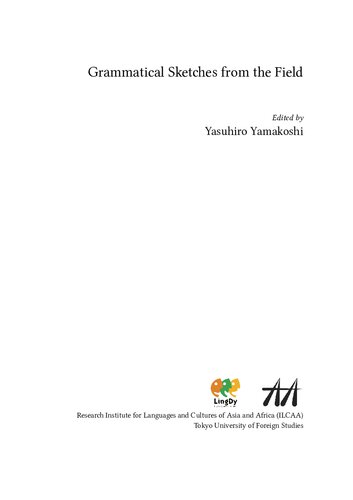

Most ebook files are in PDF format, so you can easily read them using various software such as Foxit Reader or directly on the Google Chrome browser.
Some ebook files are released by publishers in other formats such as .awz, .mobi, .epub, .fb2, etc. You may need to install specific software to read these formats on mobile/PC, such as Calibre.
Please read the tutorial at this link: https://ebookbell.com/faq
We offer FREE conversion to the popular formats you request; however, this may take some time. Therefore, right after payment, please email us, and we will try to provide the service as quickly as possible.
For some exceptional file formats or broken links (if any), please refrain from opening any disputes. Instead, email us first, and we will try to assist within a maximum of 6 hours.
EbookBell Team

4.1
30 reviewsThis book presents‘grammatical sketches’created by young Japanese descriptive linguists. Each contributor describesthephonological and grammatical outlineofthe language which they have been working on, mainly by using the primary data researched by them. This book aims to not only provideageneral outline, but also present the typological or cross-linguistic characteristics of the studied languages. For this purpose, we considered two principles with regard to the mannerofdescription, namely,(1)to use general linguistic terms instead of traditional, specific termsofeach language and area, and(2)to shareatableofcontents for reference. However, these principles led to some problems.Ifwe use general terms insteadofspecific terms, the description ofthegrammar may be incomplete. This is because many linguists have written the grammarthatis adapted tothegrammatical/functional structuresofeach language by using specific terms.Ifwe sharethetableofcontents, we might include an‘unnecessary’point,e.g.suffixation of isolative languages. On the other hand, if each of us uses specific terms based on the traditional descriptions, it would be very difficult to emphasize the contrast among the structures of different languages. Furthermore, the use of ‘un- necessary’ description points enables us to visually capture the relative characteristics of each language. Therefore, we decided to follow these principles and discussed how to draft the table of contents. We, along with young descriptive linguists based in Japan have attempted to describe the grammars of various languages worldwide on the basis of these principles since 2005.